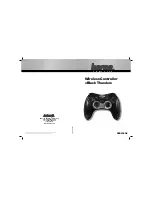
English (GB)
15
9. Installation
9.1 Transport
9.1.1 Delivery
The Conex
®
DIA-G is delivered in a cardboard box.
Leave the device in the packaging during transport
and intermediate storage.
9.1.2 Return
Return the Conex
®
DIA-G in its original packaging or
equivalent.
9.2 Intermediate storage
Permissible storage temperature: -20 °C to +65 °C.
9.3 Unpacking
1. Check the device for damage. Install as soon as
possible after unpacking.
2. Do not install or connect damaged devices!
9.4 Installation requirements
Conex
®
DIA-G
•
Dry room
•
Room temperature: 0 °C to +40 °C
•
Vibration-free location.
Sensors
•
Dry room.
– Avoid the sensor getting wet! Make sure to
locate it outside the range of the sprinkling
installation.
•
Room temperature according to the technical
data for the relevant sensor.
•
Vibration-free location.
•
Protect the sensor from direct heat, sunlight and
strong draughts!
9.5 Installation notes
Amperometric sensor discs are connected directly to
the Conex
®
DIA-G. If potentiostatic sensors are
used, one Conex
®
DIA-G sensor interface per
sensor is required.
Maximum cable lengths:
•
Amperometric sensors: 100 metres
•
DIA-G sensor interface for potentiostatic sensors
(CANBus connection): 500 metres.
Warning
Before assembling, disconnect the power
supply!
Enclosure class IP65 is only guaranteed if
the terminal covers are closed and the
appropriate cable glands or dummy caps
fitted.
Caution
Risk of malfunction or damage to the
Conex
®
DIA-G! Do not drop the device.
Caution
Risk of malfunction or damage to the
Conex
®
DIA-G! Grundfos accepts no
liability for damage caused by incorrect
transportation or missing or unsuitable
packaging of the device!
Note
For information on storing the sensors, see
the manual of the gas sensors.
Note
Retain the packing material or dispose of it
according to local regulations.
Caution
The sensor must be replaced after a gas
eruption that has exceeded the measuring
range. Do not expose the sensor to a
higher gas concentration, even during
start-up and test.
Caution
Gas sensors should not be mounted close
to major sources of interference such as
large machines, etc.
Caution
If these assembly requirements are not
observed, there may be damage to the
measuring device or incorrect
measurements!
















































